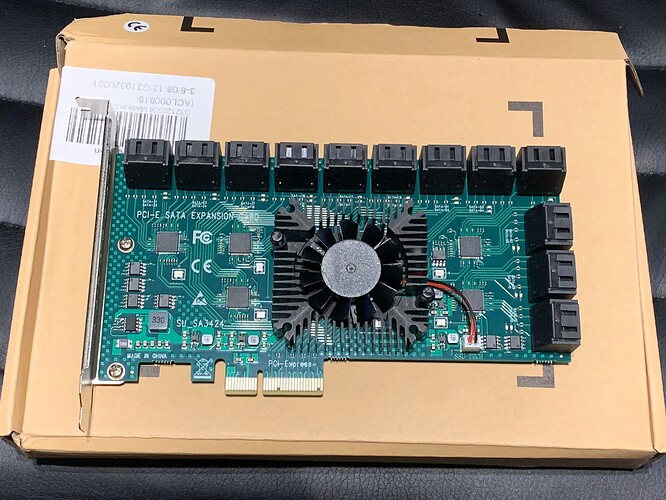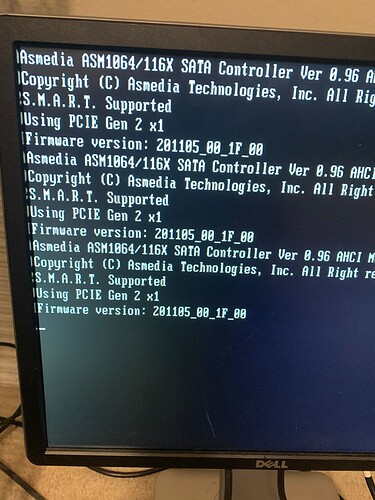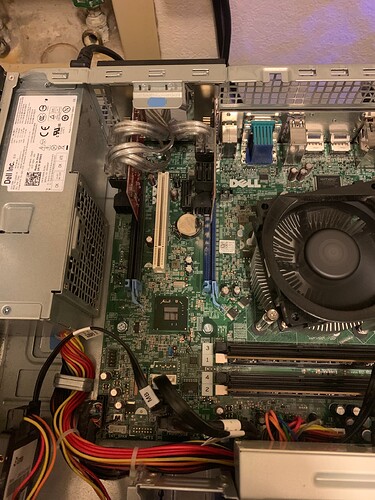Sorry, I’ve been busy on some other projects but I did finally get it plugged in and did some brief testing. It actually shows up as 3 ASMEDIA chips when booting, so each chip must control 8 ports:
It seems to work just fine with port multipliers!
Here you go: SATA PCI E Adapter 4/5/8/10/12/16/20/24 Ports PCI Express X1 X4 X8 X16 To SATA 3.0 6Gbp Interface Rate Expansion Card Controller|Computer Cables & Connectors| - AliExpress
I got the 24 port x4 version. Each of the ASMEDIA chips show as running at x1 PCI-e speeds. I wonder if they’d run at x2 on the x16 version? It doesn’t much matter for Chia farming, of course - x1 is more than sufficient.
And now, for some big updates! Here’s the latest pic with two full shelves now:
I moved all the shelves up about six inches to make room for the two big fans underneath. They move a lot of cool air from the ground up over all drives and do a great job keeping them cool.
Before, I was running a single PowerEdge r520 with 128gb of RAM, connected to all drives. I’ve realized that even though I could theoretically keep adding drives to this single server (especially with the above 24 port card), it probably isn’t the most efficient for farming and certainly not for scaling. With over a hundred drives connected, lookups were starting to creep into the 1-2 second range.
Now the r520 is racked up off camera, and it still runs the Chia full node and farmer (along with 16 other forks, each in their own VM as well). But now I’ve got these 3 little Dell Optiplex 7010’s running as my harvesters. Each one has 2 six port PCI-e cards, so it can handle up to 60 drives with port multipliers. Three of them perfectly fit on the wire rack shelf, and once I fill up the 3rd row of disks, each one will be controlling almost 60 drives.
You can buy these used on ebay for ~$100, so it is comparable to a Pi harvester setup. But you get a full Windows 10 install, up to 32gb of RAM and 2 full-length half-height PCI-e card slots. You could use these as USB harvesters as well. Great little machines! I happen to have lots of them from an auction I won awhile back, so this was a perfect use for them. Here’s a pic with the case open so you can see the 2 six-port SATA cards and the cable routing. Nice and clean!
So far that’s 108 drives all connected and harvesting! That’s it for now - working on the third shelf next as well as adding some GPUs to the top shelves for ETH mining. More to come!
P.S. If you do buy some old used Dell Optiplex’s (or any other old used PCs, really), the first thing you want to do is to remove the coin battery inside and test it. If it is less than 3.2v (very likely as these are years and years old) then it needs to be replaced or you’re gonna have a bad time.






